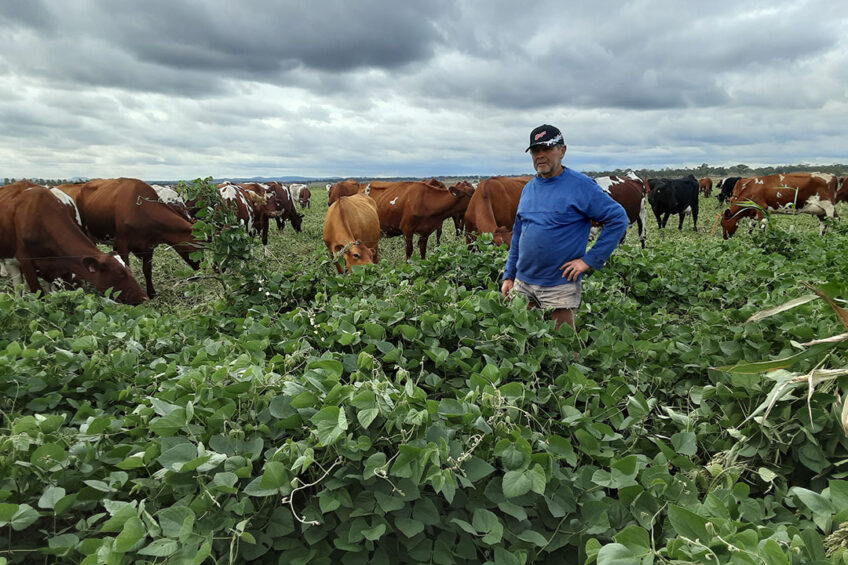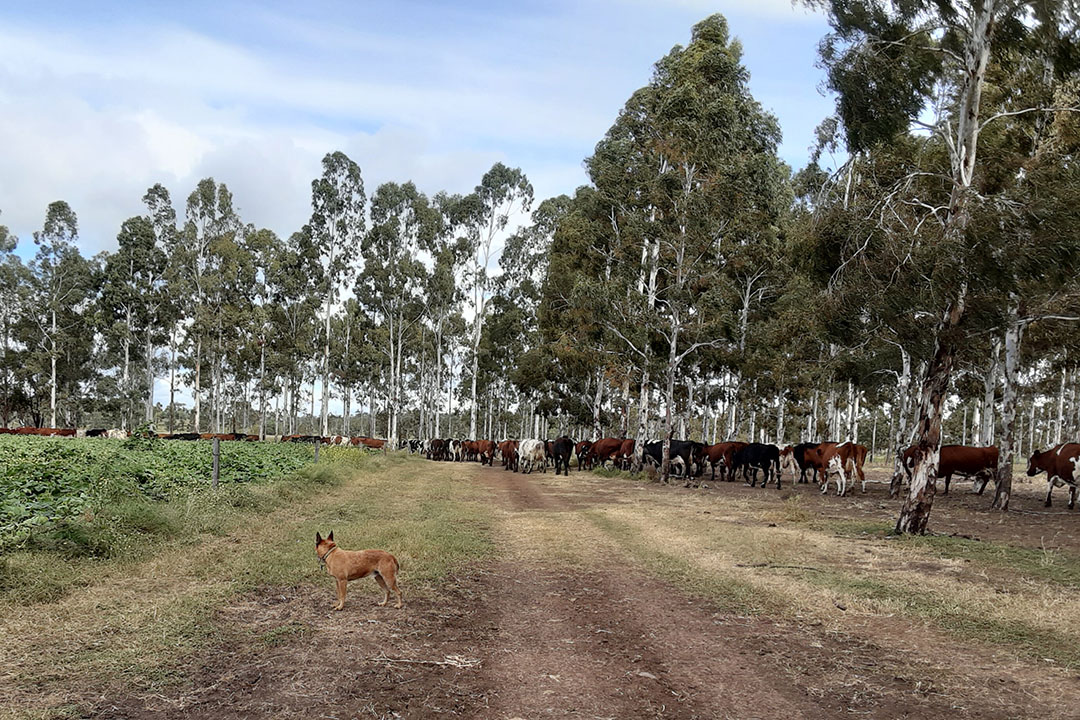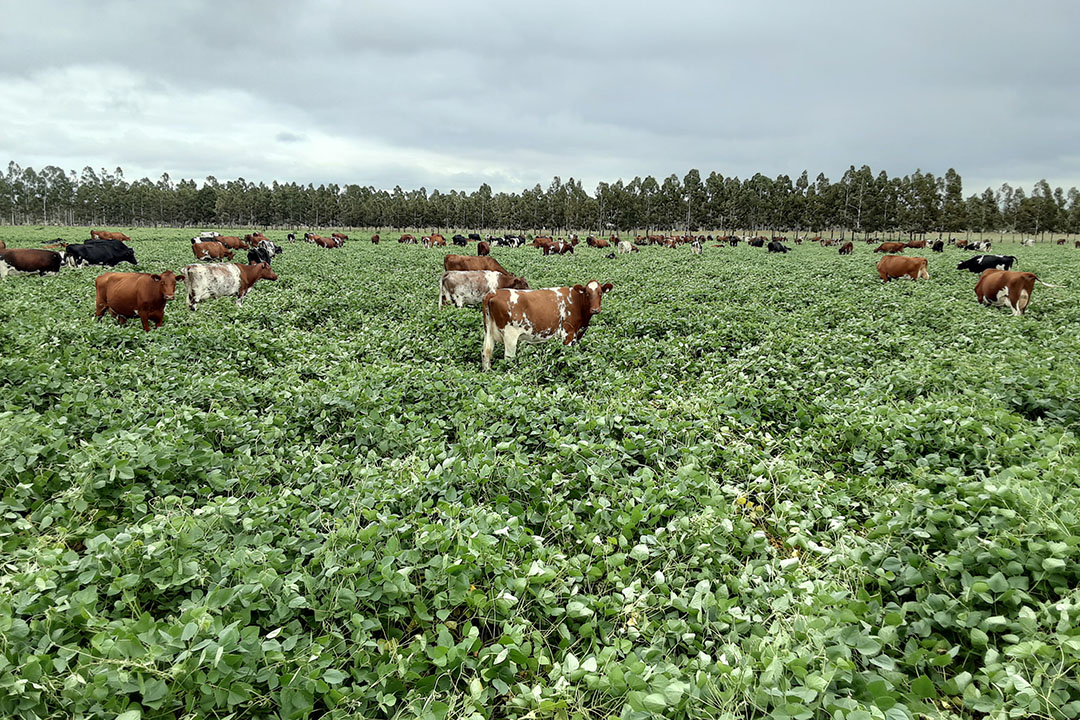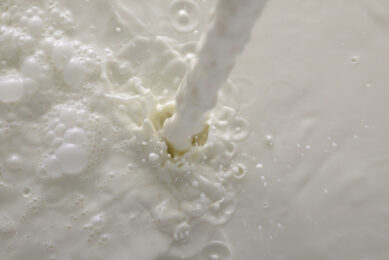“Shade for cows increases milk production by 2 litres/day”

The Vonhoff family in the Australian Darling Downs region planted 20,000 trees on its dairy farm to address runoff and salinity problems. It boosted dairy production and is now worth US$40,430 a year for them.
The Vonhoff family bought the dairy farm in Brymaroo 37 years ago. There were only about 100 trees left on the property at that time. “Our neighbouring property had some salinity problems,” David Vonhoff explains. “The water table rose to the surface and that also brought the salt to the surface. We later bought that property and actually also bought the salinity problem. Many areas in the Darling Downs area of Queensland are affected by salinity.”
Vonhoff joined a local land management group to address the problem. “We put a plan together. We started by creating a tree belt area above the cultivation area on the farm. We planted salt tolerant lucerne close to the problem areas. That lucerne really loved it there. We ended up growing cow feed from it in the drought, just because of the underground water.”
Trees and grasses
Over the years the Vonhoff family planted many trees and grasses. “Chinchilla white gums and tipuanas, and grasses and legumes like buffel grass and lucerne,” Vonhoff points out. “The salinity has disappeared now. One area with trees is not cultivated anymore, but it is highly productive grazing country. Sometimes we cut the grass for hay.”
Providing shade for cows increases the milk production by 2 litres a day, because of cow comfort. We worked out that it is worth AUS$56,000 (US$40,430) a year for us.
Working on his tree-planting programme, Vonhoff developed a passion for trees. “We have planted trees over our whole property of 1,500 acres now. Along laneways and fence lines. And we planted 2,500 trees on one patch of country that was pretty unproductive. That area is now an agroforest.”
The planting of grasses proved to be very useful for the dairy farmer. With grass and lucerne on the hillside areas on the farm, the problems with runoff were solved. “On hillsides we have to be very mindful of erosion,” Vonhoff says. “We get massive storms in this area of up to 100 millimetres of rain in a storm. But it doesn’t matter how heavy the rain is, the plants are holding that water back. And a lot of old worn-out cultivation country has gone back to grass pastures.” The family rotates areas of grass strips with cultivation crops.
The 200 cows of the Vonhoff dairy farm – mainly Australian Illawarra breed – have access to shade on all areas of the property, Vonhoff says. “That’s worth a lot for us. I’ve been told that providing shade for cows increases milk production by 2 litres a day, because of cow comfort. We worked out that it is worth AUS$56,000 (US$40,430) a year for us.” Each cow on the Vonhoff farm produces around 6,000 to 7,000 litres a year.

Eating the leaves of trees
“Sometimes it is a bit of a nuisance because the cows are camping underneath the trees while they should be out eating,” Vonhoff says. “But if you can get them out into the paddocks early enough, that is not a real problem.”
The cows enjoy eating the leaves of the tipuana trees. “It’s a wide tree; not too high. If they can reach the leaves, they will happily pull leaves, lick them off and eat them. We also have leucaena up here and the cows love eating that too. Both those trees are legumes. They create a wonderful environment for luscious green grass that grows there.”
Vonhoff also utilises the chinchilla white gum. “The poddy calves just love eating the leaves off them. We can put hay in front of them, but they will go straight for the leaves. It does not harm them. And when they grow up, they will quite happily forage on a lot of different things.”
The trees offer the Vonhoff family a lot of environmental benefits as well. “The bird life here is just incredible. The number of different birds that we have now…to have the pleasure of looking at the birds is exciting. It doesn’t matter where we are on the farm, we can hear birds anywhere. And they also help with insect control.”

Enjoying the scenery
Vonhoff’s love for nature makes him passionate about climate change. “I’m 67 now and have been farming all my life, starting with mum and dad when I was a kid. I have always been aware of droughts and the issues of heaps of rain. It’s so much more intense now compared to what it was when I was younger. A lot of things have changed. We used to get our first frost on Anzac Day, the 25th of April. But we haven’t had frost on Anzac Day for probably 15 to 20 years. It’s always a month later.”
Harvest used to be in the beginning of November, Vonhoff emphasises. “But that’s at the end of September now,” he says. “There are so many changes. Our rain events seem to be so extreme. We have had flooding and bushfires recently in Queensland, New South Wales and Victoria and the drought we had in 2019 was the worst I’ve ever seen.”
Trees and grasses brought protection on the dairy farm during intense rain events. Vonhoff says his family is happy with the current number of trees on the property. “I can enjoy the scenery now,” he says. “My son often reminds me that there are enough trees planted…”
Join 13,000+ subscribers
Subscribe to our newsletter to stay updated about all the need-to-know content in the dairy sector, two times a week.










